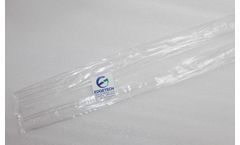Refine by
Inflammatory Response Articles & Analysis
63 articles found
It plays a pivotal role in the host defense system by degrading bacterial proteins, remodeling extracellular matrices, and shaping inflammatory responses. However, the same proteolytic activity that protects against pathogens can, when unregulated, contribute to tissue injury, autoimmune inflammation, and chronic disease progression. ...
Biocompatibility & Corrosion Resistance Nitinol is highly compatible with human tissue, minimizing inflammatory responses. Its corrosion-resistant nature ensures implants remain stable over time, reducing the risk of long-term complications. 4. ...
Platelets take part in hemostasis and wound healing and they also contribute to immune inflammatory responses as well as tumorigenesis and metastasis besides the development of cardiovascular diseases. ...
The C57BL/6 mouse strain, commonly referred to as C57, has become a standard in biomedical research due to its well-documented genetic background and immune system. This strain’s response to various stimuli, including allergens, pathogens, and other environmental factors, makes it particularly valuable for studying lung diseases and conditions, such as asthma and pulmonary ...
In the realm of biomedical research, the study of cytokines and chemokines plays a pivotal role in understanding the immune system and its responses to various stimuli. For researchers working with rat models, the Rat Cytokine and Chemokine Panel offers an invaluable set of tools to investigate these complex signaling molecules. ...
Moreover, SMECs are involved in the inflammatory response. They can produce various cytokines and adhesion molecules, which facilitate the recruitment of immune cells to areas of injury or stress within the muscle tissue. This process is vital for muscle repair and regeneration, particularly following injury or exercise-induced muscle damage. The balance of ...
It is involved in the breakdown of invading microorganisms and cellular debris during inflammatory responses. By degrading harmful entities, elastase helps in modulating immune responses and tissue repair. ...
Cellular Sources of MMPs MMPs are produced by a variety of tissues and cells. MMPs are secreted by pro-inflammatory cells and uteroplacental cells, including fibroblasts, osteoblasts, endothelial cells, vascular smooth muscle, macrophages, neutrophils, lymphocytes, and cytotrophoblasts. ...
T cells are the most numerous and functionally complex type of lymphocytes, mainly including CD4+ T cells and CD8+ T2 cells, which play an important role in cellular immunity and assist in humoral immune response. According to their functions in the immune response, T lymphocytes mainly include helper T cells (Th cells), regulatory T cells (Treg cells), effector ...
Functionally, TREM1 acts as an amplifier of inflammatory responses. Upon activation, it potentiates the production of pro-inflammatory cytokines, such as tumor necrosis factor-alpha (TNF-α), interleukin-1 beta (IL-1β), and interleukin-6 (IL-6), thereby exacerbating the inflammatory cascade. ...
Asthma, affecting over 300 million individuals globally, remains a significant health concern with a high mortality rate. Despite advancements in treatment, many patients still struggle with symptom control and recurrent attacks. While inflammation has been the focal point of asthma research, a recent study sheds light on a mechanical aspect that could refine our understanding and treatment of ...
Meanwhile, as an important signaling molecule, bile acids can activate the relevant receptors to maintain the homeostasis of hepatic glucose and lipid metabolism, and interact with gut bacteria to regulate the development of the intestine and the inflammatory response of the body. Inflammatory responses in the body, etc. ...
Tumor Necrosis Factors (TNFs): TNFs are potent proinflammatory cytokines that are involved in a variety of immune responses, including inflammation, apoptosis, and cell differentiation. ...
The IL-12 cytokine family includes IL-12, IL-23, IL-27, and IL-35, which have different roles in innate and adaptive immune responses, with IL-12 and IL-23 having pro-inflammatory effects, IL-27 having pro- and anti-inflammatory effects, and IL-35 having anti-inflammatory effects. Cytokines not only enhance the antitumor ...
It is characterized by persistent airflow limitation and an enhanced chronic inflammatory response in the airways and the lungs. Its developing factors include smoking, air pollution, and genetic predisposition. ...
Purine release, metabolism„ and signaling in the inflammatory response. Annu Rev Immunol. (2019) 37:325–47. doi: 10.1146/annurev-immunol-051116-052406 [2] Bowser JL, Lee JW, Yuan X, Eltzschig HK. ...
However, an excessive immune response can be harmful to the organism itself. The inflammatory response is an important active defense mechanism of the body, but chronic inflammation is one of the predisposing factors for cancer development. ...
It usually binds to its inhibitory protein in a non-activated state in the form of P50-P65 dimer. Many inflammatory responses are strongly associated with NF-κB activation. By combining CPP (8K, octa-yLysine) with NF-κB essential regulator binding domain (NBD), Dave et al. treated mice with inflammatory bowel disease by ...
It is characterized by persistent airflow limitation and an enhanced chronic inflammatory response in the airways and the lungs. Its developing factors include smoking, air pollution, and genetic predisposition. ...
Cytokines, small molecules with potent biological activity, are primarily synthesized by immune and non-immune cells (e.g., vascular endothelial cells, epidermal cells, fibroblasts) in response to stimulation. These signaling molecules form intricate networks that contribute to immune responses, inflammatory reactions, cell proliferation, and ...









